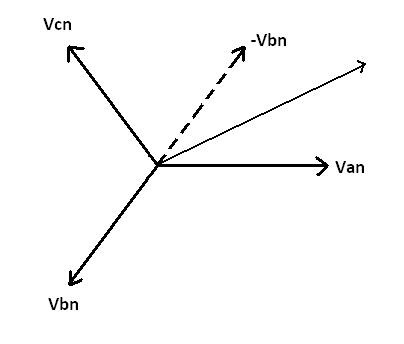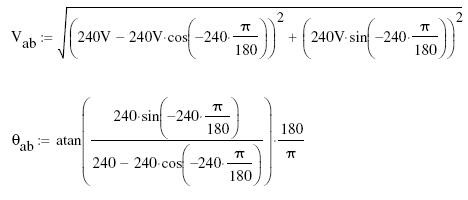The connection scheme shown above in figure 1 can be used to indirectly measure the line-to-line voltages on a Y-connected systems. The line-to-line voltage is the vector sum of the line to neutral voltages. So, for example, if we know Van, Vbn, and Vcn (defined as in the diagram below), we can find the line to line voltages as follows:

The following phasor diagram (diagram 1) will help visualize the phasor math required to convert from line-to-neutral voltages to line-to-line voltages.

Diagram 1. Line-to-line calculation phasors
We will start with an example showing how to measure Vab. As has been described above, the line-to-line voltage is the phasor sum of the line-to-neutral voltages, so

Nominally, each phase in a three phase system is spaced exactly 120 degrees apart. However, since our intent is to perform measurements in the system, we cannot assume it to be ideal. Because of this, instead of assuming 120 degrees of separation between phases, we will simply use Θxx to denote the angle between two phases. Van as defined above has zero phase, and Vbn has a phase of Θab.
Breaking up Vbn into rectangular components results in the following:

Subtracting the in-phase component of Vbn from Van:

From the rectangular components, we can calculate the magnitude of the line to line voltage:

To calculate the phase angle Θab, we now find the phase of the rectangular vector calculated above:

To illustrate the above, we assume the line-to-neutral voltages are 240 V, and the phase to phase angle is 240 V.
Vab = 415.7V (as referenced in the first paragraph of this document)

Θab = 30

IMPORTANT: The assumption that the line-to-line voltage is sqrt(3) times the line-to-neutral voltage is only valid when the magnitudes of the line-to-neutral voltages are all the same.